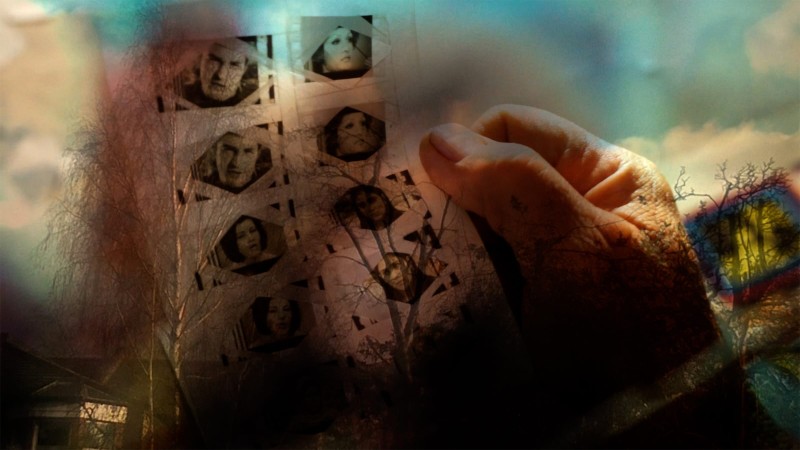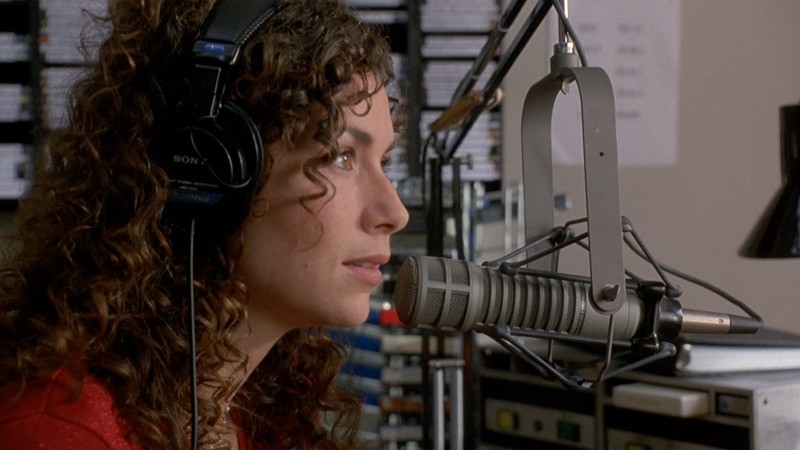Killing Time with Fronza Woods
By Lydia Ogwang

Newly restored and now playing on the Criterion Channel, Killing Time (1979) and Fannie’s Film (1981) are extraordinary achievements from a moment in American cinema when pioneering Black women filmmakers began to make inroads into the industry. Their director, Fronza Woods, has never made another film, but her idiosyncratic voice comes through loud and clear in these two shorts. In Killing Time, she assumes the pseudonym Sage Brush to play a young woman whose attempts at suicide are stymied by the fact that she can’t decide what to wear. Fannie’s Film offers a documentary portrait of a sexagenarian cleaning worker who radiates self-worth. Over the course of several emails, Woods—who has lived in France since 1987—told me about her childhood in midcentury Detroit, the motivations behind her work, and the films she never made.
Having spent a lot of my adolescence in southwestern Ontario, I’ve logged my fair share of hours in Detroit, which I’m quite fond of. Can you tell me about growing up there?
Since you are so much younger than I, the Detroit you know has little to do with the Detroit I grew up in, which pretty much ceased to exist after the riots of 1967—so beautifully and justly captured in John Hersey’s The Algiers Motel Incident, and so badly, Hollywoodenly brought to the screen in Kathryn Bigelow’s Detroit.
My Detroit, when I was a little girl, had icemen (who delivered huge blocks of ice on the back of horse-drawn carriages, and carried huge tongs with which to off-load them), milkmen, paperboys, mom-and-pop corner stores, four distinct seasons, pea-soup fogs, icicles that hung down from the gutters like long swords. Bonfires in the autumn, big, furry caterpillars dropping from the trees in the spring, sweltering summers, and brutal winters.
Most people, including my father, could not afford a car back then, so they relied on the streetcar to get them to and from work. And, of course, it was our transportation for going downtown, or to visit relatives in distant neighborhoods. Some streets and many alleys still had either cobblestone or red brick paving. It was a tree-rich city. There were streets lined with majestic Dutch elm trees.
The Detroit of my childhood was a very prosperous city, for the obvious reason—the automobile industry was thriving at the time. And indeed, some of the grand buildings of that era still remain, as testimony to a more flourishing time. But I grew up in a poor, racially mixed neighborhood. It was the time of the Great Migration, so there were many poor, often undereducated—although not by any means stupid—people, Black and white alike, from the South, and many immigrants, mainly from Poland and Italy, living side by side. It would not be unusual to see people raising chickens in their backyards, for example, bringing rural traditions with them to the city.
The schools were integrated; however, the vast majority of the teachers were white. We pledged allegiance to the flag, “one nation, indivisible,” not “one nation under God,” which came later. Maybe that’s where the rot started to set in—with that little two-word alteration. We also had “duck and cover” drills on a regular basis.
When I was ten, we moved to a nicer, formerly white neighborhood on the east side of Detroit, bordering Grosse Pointe. White people were selling out, moving to the suburbs, which, of course, were off-limits to Blacks. Initially, this did not have an impact on the downtown area. We still had our swell department stores, beautiful art-deco cinemas, nice restaurants, etc., but the writing was soon on the wall.
All through my high-school and college years, Detroit remained intact and a very vibrant city. There was a cultural life that was quite rich for a medium-sized city. There was good theater, local and imported, a wonderful symphony, great jazz clubs, and, of course, Motown. I loved growing up in Detroit, and I love Detroiters, but somehow I knew I would never stay there.
The last time I visited the city, about seven years ago, the place was unrecognizable to me. My older sister, who had introduced me to so much of Detroit’s wonderful cultural life, and her husband drove me around the city, and I simply could not get my bearings. It was like visiting a war zone, only there’d been no war, just the ravages of winner-take-all capitalism. When we approached Eastern Market, near downtown Detroit, it was standing pretty much alone in a vast wasteland. I could see a Whole Foods sign, way off in the distance, the final nail in the coffin of the Detroit of my childhood and early years.
Did you grow up surrounded by and/or making art? Did your interest in film and filmmaking begin there?
My mother had wanted to be a dancer—a showgirl-type dancer—and she definitely had an artistic bent. My father was Mr. Practical, although he, too, had an incredible sense of color and an artistic aesthetic, I would say. Both loved music, my father’s favorite being Paul Robeson. But no, I had no thought of making and/or of being in movies at that time. At any rate, “show business” was frowned upon by most Black parents, especially for their daughters.
The art that surrounded us, and other families in America at the time, was the radio. We grew up sitting under the radio during the tail end of the period that was considered the golden age of radio, listening to The Jack Benny Program, Burns and Allen, The Life of Riley, Amos ’n’ Andy, The Shadow, Fibber McGee and Molly, Beulah, The Great Gildersleeve, The Lone Ranger, the different “playhouses” sponsored by different advertisers, etc. We grew up imagining the characters we were not seeing. Then along came television.
My mother loved movies, so we were also exposed to movies at a quite young age. I must have been seven when she took us to see Sunset Boulevard—how was she to know that it would open with a dead body floating in a swimming pool? And in those days, it was common for kids to go to movies with their friends, unaccompanied by adults. Saturday matinees! Later, I would go to movies with my older sister, who would sometimes have to explain things I was too young and/or too naive to understand, like the insinuation of homosexuality in Cat on a Hot Tin Roof, or the viciousness of a character like J. J. Hunsecker in Sweet Smell of Success.
What was it about filmmaking that appealed to you above other art forms?
I can remember very clearly what made me realize I wanted to be behind the camera, so to speak, to be in the business of creating images. Perry Como came to Detroit to tape his show, while I was still at [Wayne State] University. I went to see the taping, and I just fell in love with everything that had to do with behind-the-scenes, especially the technical know-how involved. I think that it was the level of the professionalism that seduced me.

Your two films, Killing Time and Fannie’s Film, feel very much like kindred spirits: both exhibit a delicate marriage between slice-of-life narrative and portraiture, with a focus on the rich interior lives of their main characters and a preoccupation with their visibility to the outside world. From your perspective, how do the films, and their characters, speak to each other?
Although it is not made apparent why Sage Brush is in a state of calm, not to say goofy, despair, there are hints at the reason. The most salient, for me at least, is when she says, “I’m not a cactus, I need a lot of watering”—in other words, people are not seeing her for who she is, not recognizing her unique needs. I think we all go through that—too much praise, or not enough praise. Too much attention, or not enough attention, or not enough of the kind of attention we want and think we need.
I think Fannie is different. I think she could give less than a damn about “being seen.” I’m the one who assumed that she was invisible to others, and that it mattered that she be seen. So I’m the one who put that invisibility on Fannie’s Film, not Fannie. It’s so embarrassingly clear that I was expecting Fannie to reflect my attitudes, as evidenced by my shocked response to her saying that she wouldn’t change anything about her life.
She is self-possessed and has such a healthy sense of her own self-worth that she doesn’t need to look for it from others, and she certainly doesn’t need to look to others for approval. Unlike Sage Brush, she can water herself, and she knows just how much she needs to thrive. Maybe the two characters show how deceptive what we see in the mirror can be: Sage Brush being the negation of what she sees in the mirror, Fannie being the acceptance, the affirmation of a woman who owns herself, warts and all.
I do wonder, however, if you would see the films as “kindred spirits” if they weren’t always, or almost always, shown together? Maybe there is something about the pacing that makes them seem like kindred spirits? Or the fact that both films are about women, women seen through their own eyes and values, not measured or seen through the prism of an outside world. Maybe it’s because both films are masculinity-free. Maybe it’s because neither protagonist makes reference to the dominant white world. In the case of Killing Time, there’s no anchoring to anything, and that was done on purpose. Poor Fannie almost got anchored by my rage, but she was too much her own wholesome and self-respecting person to fall into my trap.
In a published piece on Milestone Films’ blog on the rediscovery of your work, you write that, when asked by friends if you plan to return to filmmaking, you would answer, “If I had something to say, I would make a film, but I don’t have anything to say.” What were you attempting to say with Killing Time and Fannie’s Film?
To tell the truth, Killing Time was the best I could come up with, on the quick, for a subject for a student film. It was developed around this very simple truth a friend observed about me—that I would never be able to commit suicide because I wouldn’t know what to wear. This got me thinking about vanity, ego, self-pity, self-importance, the life-saving effects of indecision, maybe selfishness too, and what it is that keeps us going from day to day. In the end (no pun intended!), in my own naive way, I rather hoped it would discourage anyone with suicidal thoughts. Of course, I know it is not that simple, and I do not take the subject of suicide lightly.
With Fannie’s Film, above and beyond feeling the need to express my own anger about inequality and “benign” racism, I really did want people to think about the “invisible” people who make their lives more livable. I wanted to make a film that showed that those people have rich lives and people that love them, too. They, too, dream. They, too, can be funny and insightful. But you’ll never know it if you don’t engage with them, if you pretend they don’t exist. In hindsight, it sounds embarrassingly “worthy”!

In the opening of that same piece, you note that you had “opted out of the scene years before, and no one seemed to notice [you were] missing.” I’m interested to know more about your impressions of “the scene”—what and who made up the scene? What were you opting out of? And what did opting out look like for you?
Well, the young and talented Spike Lee was just coming to public notice with what I consider in some ways his best film, Joe’s Bed-Stuy Barbershop: We Cut Heads. There were the Hudlin brothers, St. Clair Bourne, William Greaves, the lovely, very talented Marco Williams. There were Black women filmmakers who were starting to be talked about—Kathe Sandler, Ayoka Chenzira, just to mention two who come quickly to mind—but in general, it really was about the men.
To state the obvious, there’s a lot of ego in filmmaking, and you need a big one and/or a lot of self-confidence to convince others that you’ve got what it takes. I, alas, was not blessed with either. Also, I had my own vision, and was quite arrogant in my own way, so I’m not sure I would have been so easy to work with.
I was opting out of desiring so much and not having the drive, the ego, the self-confidence, the means to meet those desires. I was just tired, and there were so many things not in my favor that it did seem “suicidal”—there’s that word again—to keep beating my head against the brick wall of bad timing and indifference.
You’ve also commented in past interviews about the trajectories accessible to Black filmmakers, noting your own aversion to the conventional Hollywood conceptions of filmmaking. What do you suppose the would-be subsequent films of Fronza Woods would have been like?
Hopefully they would have had the production values of a well-made Hollywood film, but with a subject with real social content and a humanist, left point of view. That’s why I so badly wanted to make a film about [educator and activist] Myles Horton and his Highlander school, and should have made a film about [civil rights leader] Septima Clark. But the truth is, technically I wasn’t ready for such an undertaking. It would have been a well-intentioned mess. Or I’d like to attempt a well-made comedy, but comedy is hard. I’m not even sure I could sustain an audience’s interest for the duration of a feature-length film. Few filmmakers can.
One thing I know for sure is that my film would not be politically correct, nor would it have phony cross-racial casting, or whatever they call it, unless it was called for. It would definitely not be about white people, although I’m sure there would be some in it, and it would be a truer portrayal of women than most men are capable of. It might have to be a silent film, as I’m not that good at writing dialogue. Nor do I have any idea whether or not I’m good with actors, as I’ve only once done a test film with actors. Come to think of it, maybe I should just make cat videos. I’m good with cats. Really good with cats.
What do your days look like in France? Is it true you’re working on a memoir?
Too boring to respond to—not your question, but my days. Get up, get washed and dressed, make sure there are no unsightly hairs on my chin, feed the cats . . . have breakfast . . . Pilates class a couple of times a week, farmers’ market, emails, phone conversations with close friends . . . read, read, read . . . occasionally go see a movie, but there are so few I want to see anymore. Basically, anything that distracts me from straightening up my office. And I do spend quite a lot of time trying to stay in contact with friends.
And yes, it is true that I am working on a memoir, but given my capacity for “killing time,” it probably won’t be finished until my next incarnation.



